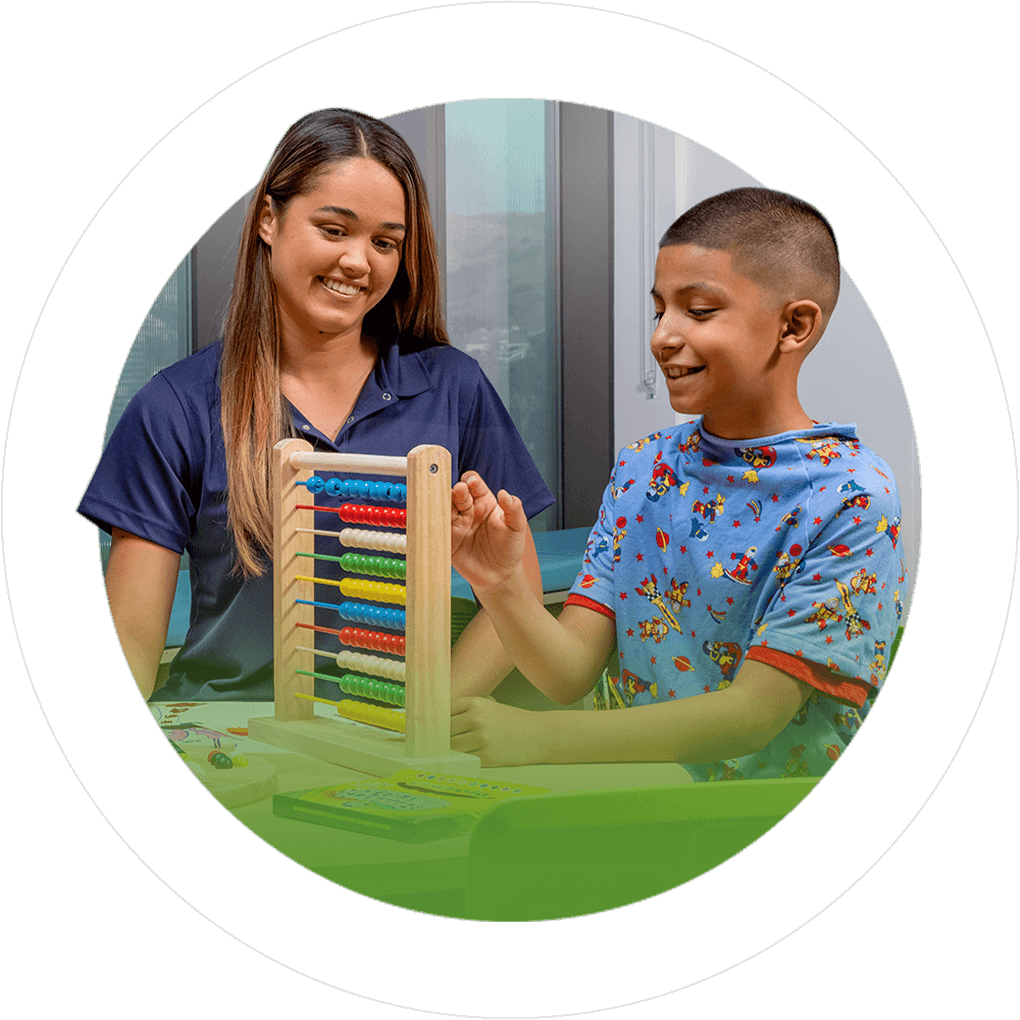If your child has limbs of different lengths or limb deformities, they may need highly specialized care. Our Limb Lengthening Center is among the best on the West Coast, providing the latest treatments with personalized care.
Our experts are here to diagnose your child’s condition, recommend the right treatments, and help manage care from start to finish. With our support, your child can find relief and live their life to the fullest.
Why Choose Us
- Expert providers: The physicians and surgeons at our Limb Lengthening Center are among the most experienced limb lengthening and orthopedic reconstructive specialists in the western U.S.
- The latest treatments: We offer the most innovative treatments and use the latest technology to give you the best possible outcome.
- Personalized care: Every patient is unique. We’ll work closely with you to understand your child’s needs and develop the right treatment plan.
- All the care you need in one location: Your child will have access to an entire team of specialists, all in one place.
Conditions We Treat
- Limb length discrepancies, a group of conditions where limbs are not the same length (for example, one leg is shorter than the other).
- Congenital femoral deficiency (previously known as proximal femoral focal deficiency), which is a condition apparent at birth where one femur (thigh bone) is not fully developed and is often shorter than normal. People with this condition also have hip and knee problems.
- Congenital pseudoarthrosis of the tibia (shinbone), when a break in the tibia never fully heals in a young child. Breaks can happen on their own or after a minor accident. These breaks often develop within two years of life but can occur later in life as well.
- Fibular hemimelia, a condition apparent at birth where one fibula (calf bone) is not fully developed and is often shorter than normal or absent. People with this condition also have knee and ankle problems.
- Tibial hemimelia, a condition apparent at birth where the tibia is not fully developed and is often shorter than normal or absent. People with this condition also have knee and ankle problems.
- Multiple hereditary exostoses, a genetic condition where small, benign (noncancerous) tumors grow from the growth plates of bones. These tumors can cause pain and affect bone growth.
- Malunion and nonunion conditions, which occur when fractured bones either don’t heal correctly (malunion) or not at all (nonunion).
- Skeletal dysplasias, genetic conditions where development of bones and joints is abnormal. This often causes limb length differences and limb deformities.
- Blount’s disease, which affects bone growth near the knees. The outer part of the knee grows while the inner part does not grow normally, causing a bow leg deformity. This can occur early in life or into adolescence.
- Legg-Calve-Perthes disease, which causes a temporary blockage of blood flow to the ball of the hip joint. The lack of blood causes bone tissue to slowly die and change shape over two to three years.
Treatments We Offer
- Limb lengthening procedures focus on growing new bones. These procedures can help correct a variety of limb length discrepancies, such as differences in limb length or short limbs. Surgeons can also perform limb lengthening procedures on both legs (called stature lengthening) to increase a person’s height.
- SUPERhip, SUPERknee, and SUPERankle (systematic utilitarian procedures for extremity reconstruction) are surgical bone reconstruction procedures that correct limb deformities in order to prepare a leg for lengthening. This is often required in congenital femoral deficiency and fibular hemimelia.
- The Paley X-UNION is a recent advancement in the treatment of congenital pseudoarthrosis of the tibia. It combines a surgical reconstruction with medical treatment in order to fix the pseudoarthrosis and prevent it from re-breaking in the future.
- Bone transport grows new bone tissue to fill a bone defect.
- Periacetabular osteotomy (PAO) can treat hip dysplasia. During the procedure, surgeons help your hip socket cover more of the ball of your femur.
- Triple pelvic osteotomy treats shallow hip sockets where the femur doesn’t fit correctly.
- Joint distraction can treat osteoarthritis by repairing cartilage, the soft “cushion” between bones that keeps them from rubbing together.
- Fixator-assisted nailing/plating uses a fixator, or brace worn outside the body, to hold a bone in place. Surgeons then place nails or plates inside the bone to permanently correct the deformity, and the fixator is removed.
- Intramedullary lengthening with PRECICE nail, where surgeons place a magnetic-controlled lengthening nail inside the femur, tibia, or humerus bone in order to lengthen it. This procedure avoids the need for external braces.
- Epiphysiodesis corrects limb length discrepancies in children through surgery. The procedure uses screws around the growth plate on both sides to stop it from growing, which allows the shorter leg to catch up to the longer leg.
- Guided growth corrects a leg deformity (usually bow or knock knees) in children using surgery. The procedure uses screws to hold a growth plate in place to prevent a leg from growing on only one side of the growth plate, which will guide the growth of the leg until it is straight.
What to Expect
Treatment Timeline
Treating limb length deformities and other discrepancies can take time. In some cases, you may need to stay near the Limb Lengthening Center for up to four months for regular health monitoring while your child undergoes treatment. We can provide information about booking hotels, funding, food, and more.
Before Your Operation
About one to two weeks before surgery, you’ll meet with your child’s care team to prepare for the procedure. You should bring any prescription medications your child is taking to your visits for your care team to review. During these visits, your child’s doctor will:
- Review what to expect during treatment
- Provide a consent form for the surgery for you to sign
- Go over instructions to follow, such as when your child should stop eating before the procedure
- Review your child’s medical history to make sure they can safely undergo surgery
- Order additional X-rays, if needed
Take the Next Step
We’re here to provide the care your child needs to reach their potential. Call us at 909-558-2808 to schedule an appointment today.
Insurance
We accept most insurance, including Inland Empire Health Plan (IEHP) and Medi-Cal.
Do I need a referral?
Most insurance providers will require a referral from your primary care provider. If you’re not sure what your insurance requires, call us at 909-558-2808 for help.









